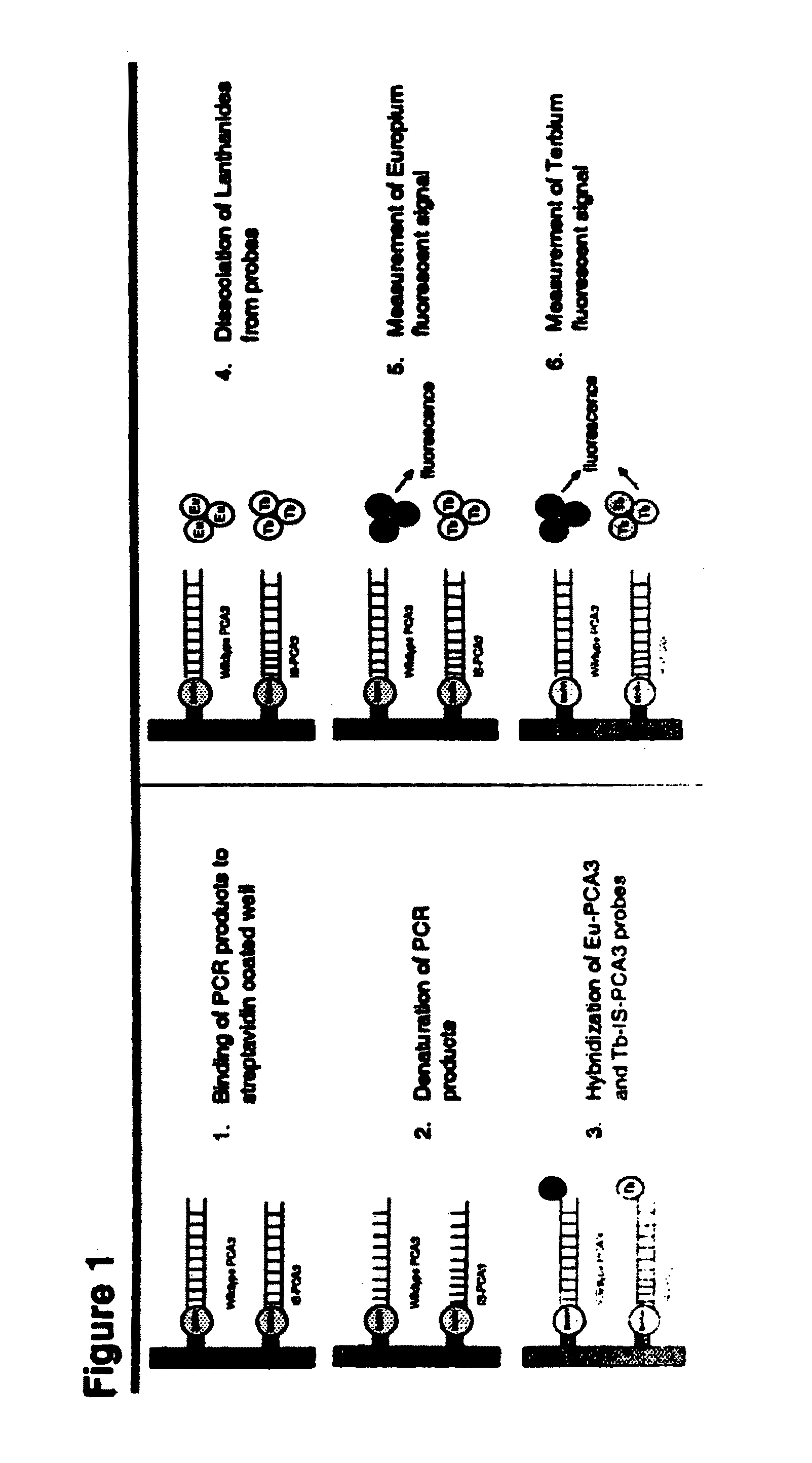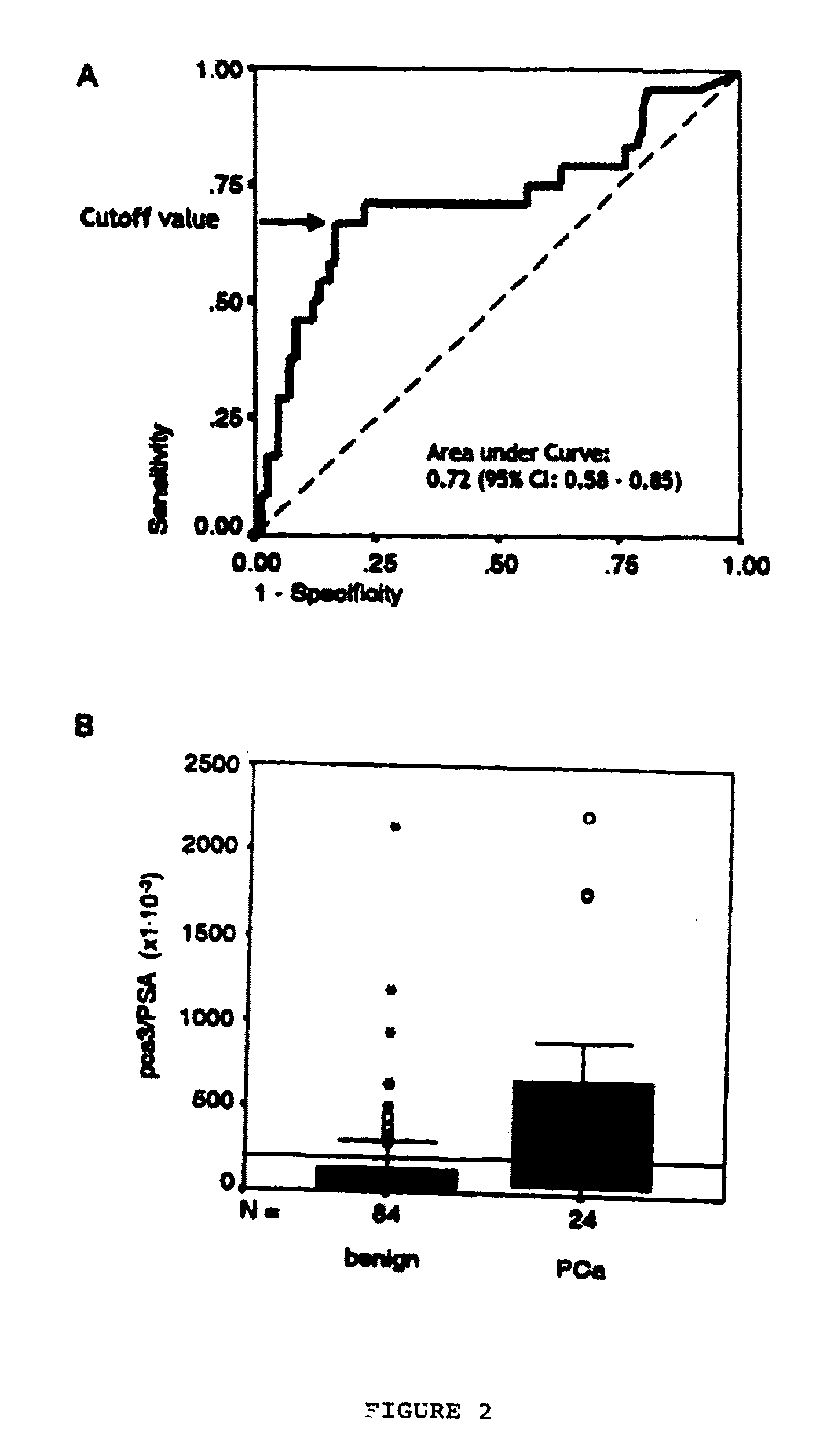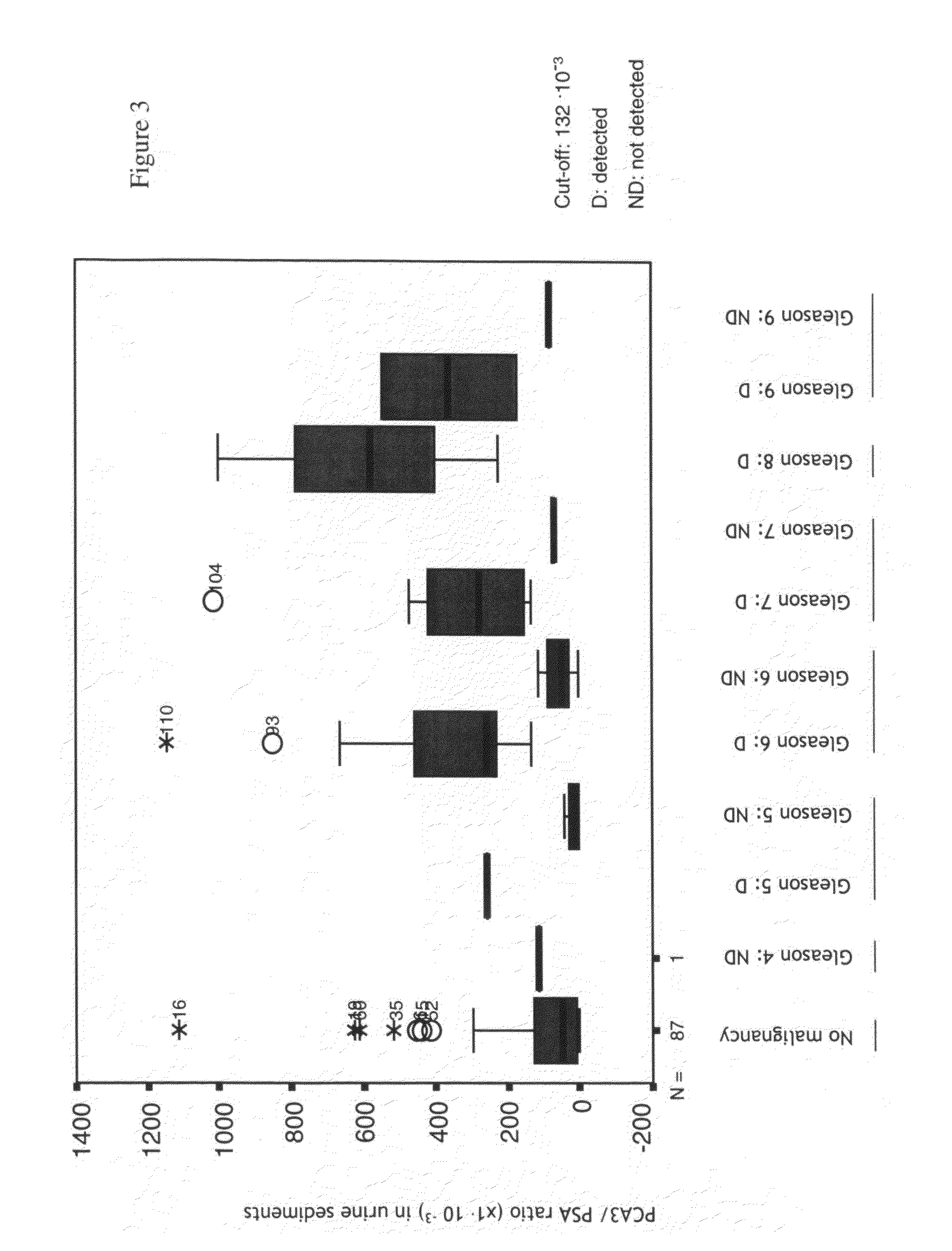mRNA ratios in urinary sediments and/or urine as a prognostic and/or theranostic marker for prostate cancer
a prostate cancer and ratio technology, applied in the field of prostate cancer, can solve the problems of lack of very specific and sensitive molecular tests, slow death of the disease, limited value of transrectal ultrasound alone, etc., and achieve the effect of facilitating the separation of bound target sequences
- Summary
- Abstract
- Description
- Claims
- Application Information
AI Technical Summary
Benefits of technology
Problems solved by technology
Method used
Image
Examples
example 1
The PCA3 / PSA mRNA Ratios Correlate with Histological Grade in the Biopsy
[0222]In order to determine if the expression level ratio between PCA and PSA would be a good prognostic and theranostic tool, a study on ˜150 patients presenting elevated serum PSA levels (>3 ng / ml), as an indication for ultrasound guided biopsy and histological assessment of presence / absence of malignancy was conducted. Patients received study information and informed consent was required to enter into the study. Cancer was identified and confirmed in 49 patients by guided biopsy and histological grade analysis. The number of events, with histology in the GS area now considered to be the most difficult to assess biological aggressiveness in (38 cases with a biopsy GS of 6 and 7).
[0223]In urinary sediments, following extended DRE, the ratio PCA3 / PSA mRNA was evaluated in view of assessing whether this ratio could be correlated with biological aggressiveness. PSA mRNA levels were used to normalize the test, to c...
example 2
PCA3 Gene Based Analysis of Urinary Sediments has Prognostic Value
[0226]A new cohort of approximately 300 patients with elevated serum levels (>3 ng / ml) was tested as in Example 1. The patients received study information and signed informed consent in order to enter the study. For histological assessment ultrasound guided biopsy for the presence or absence of malignancy was performed. In 108 patients cancer was identified by histopathological evaluation of the biopsies. We compared the histology with the PCA3 / PSA mRNA ratio obtained immediately before the biopsies.
[0227]As seen in FIGS. 5-6, a clear correlation was seen between Gleason (sum) score and the level of PCA3 / PSA mRNA ratios. Subsequently, the distribution of Gleason grades, in cases of which the test was positive / true positive and the ones in which the test was negative, was analyzed. The sensitivity per grade is given using a threshold of 132·10−3. The sensitivity to detect high grade (aggressive) cancers is higher. In o...
example 3
Detailed Analysis of Histopathological Parameters and PCA3 Test Results
[0229]PCA3 gene expression is prostate-specific and is strongly up-regulated in prostate cancer cells compared to non-malignant prostate cells. It was successfully demonstrated that PCA3 gene-based analysis can detect prostate cancer cells in urinary sediments after extended DRE 1 and 2 above. Consequently PCA3 has been shown to have tremendous potential in prostate cancer diagnosis. Having now demonstrated that more aggressive tumors could grow in a more invasive manner and shed more cancer cells in the prostatic ducts, it was also demonstrated that PCA3 gene-based analysis correlates with increasing Gleason score in biopsies and therefore has potential as a prognostic parameter (see Examples 1 and 2 above). In this subgroup analysis, the histopathological parameters of the radical prostatectomy specimens were correlated to the results of PCA3 gene-based analysis.
[0230]In the clinic, a cohort of prostate cancer ...
PUM
| Property | Measurement | Unit |
|---|---|---|
| temperature | aaaaa | aaaaa |
| temperature | aaaaa | aaaaa |
| temperature | aaaaa | aaaaa |
Abstract
Description
Claims
Application Information
 Login to View More
Login to View More - R&D
- Intellectual Property
- Life Sciences
- Materials
- Tech Scout
- Unparalleled Data Quality
- Higher Quality Content
- 60% Fewer Hallucinations
Browse by: Latest US Patents, China's latest patents, Technical Efficacy Thesaurus, Application Domain, Technology Topic, Popular Technical Reports.
© 2025 PatSnap. All rights reserved.Legal|Privacy policy|Modern Slavery Act Transparency Statement|Sitemap|About US| Contact US: help@patsnap.com



